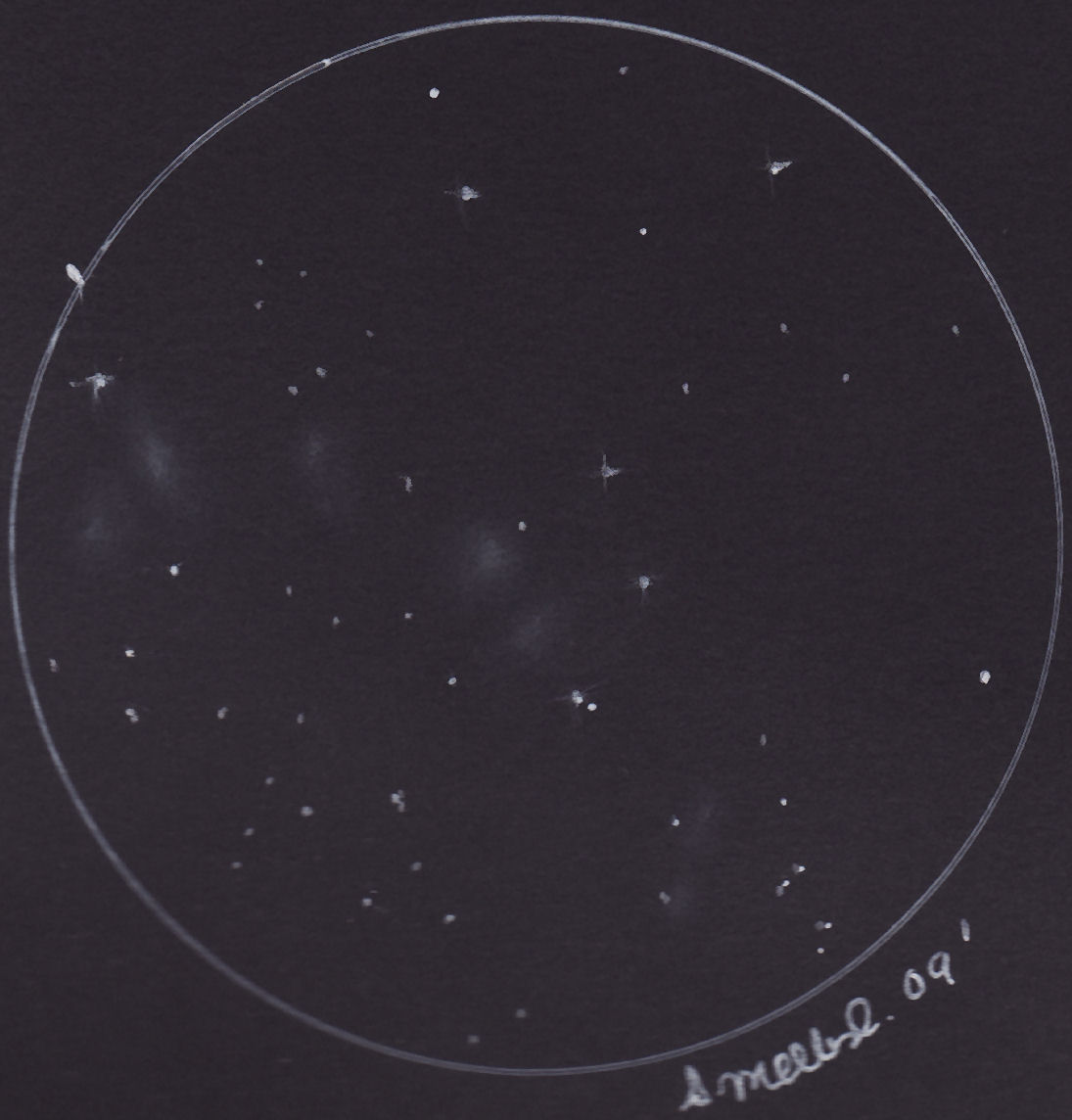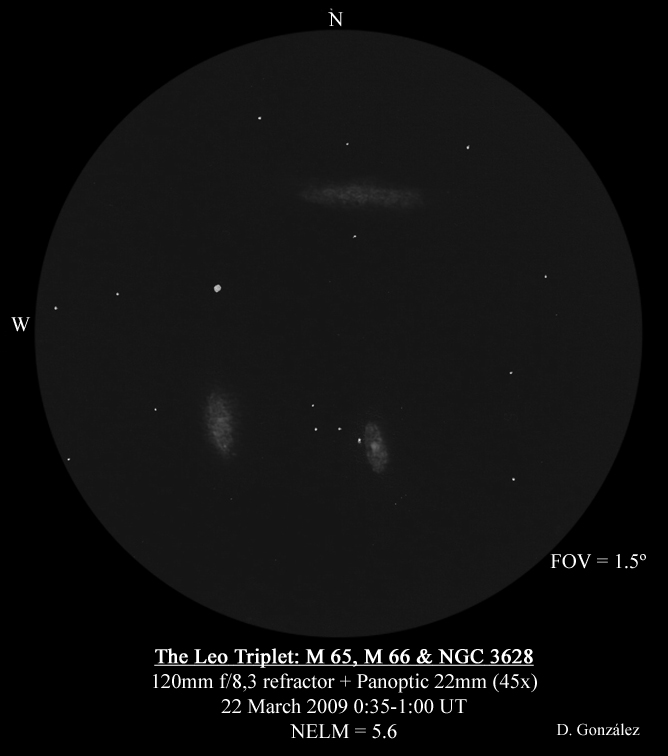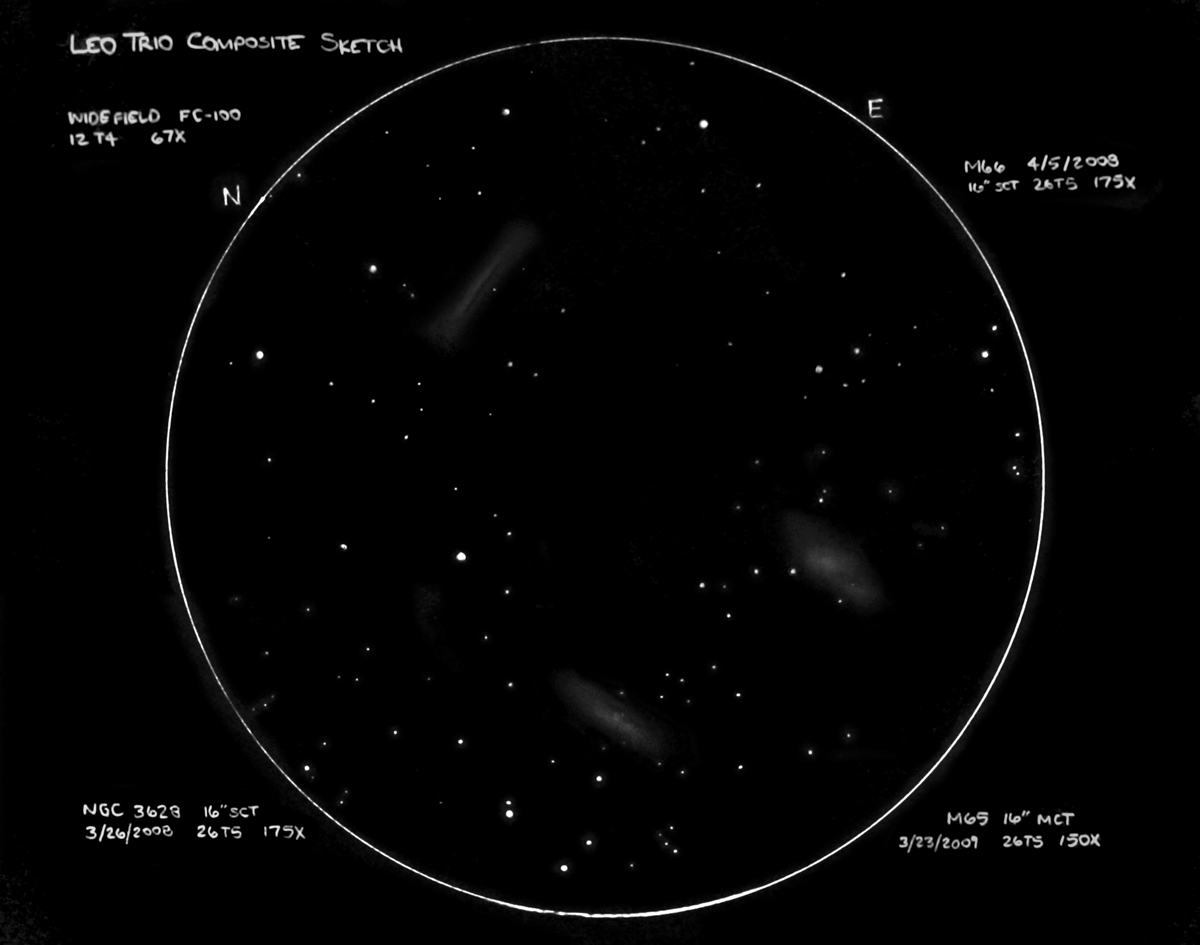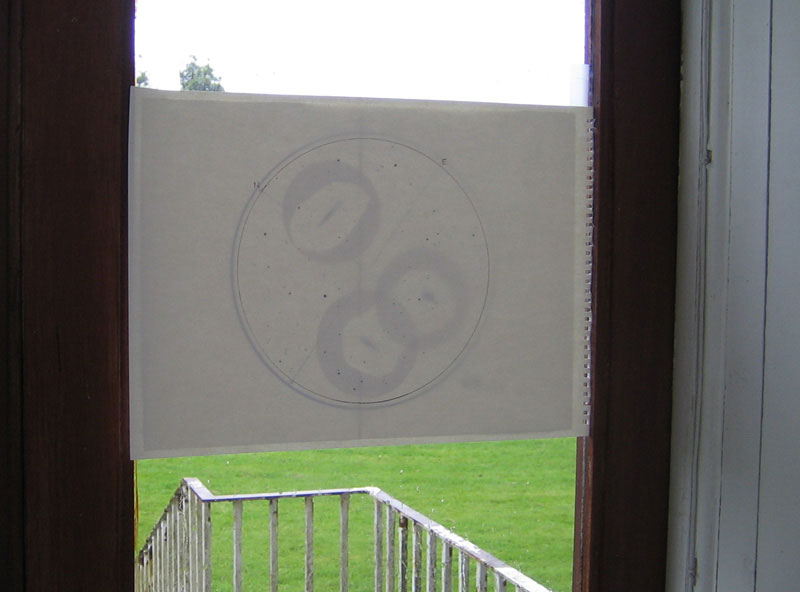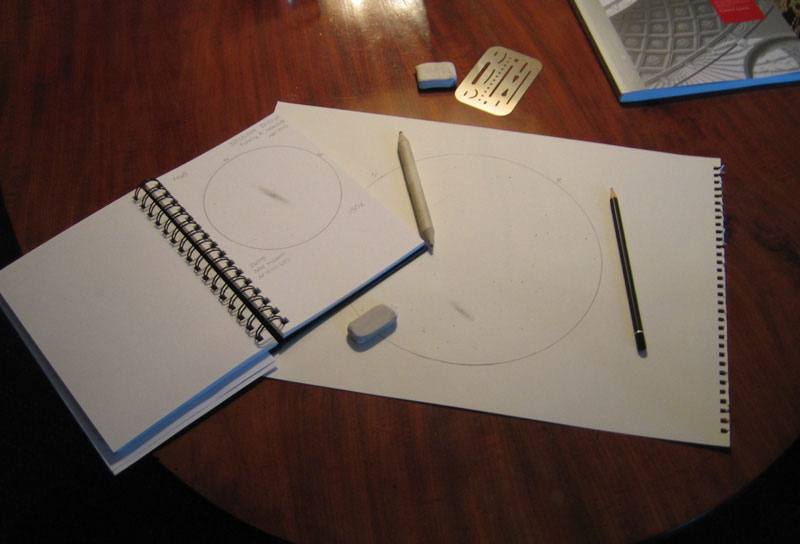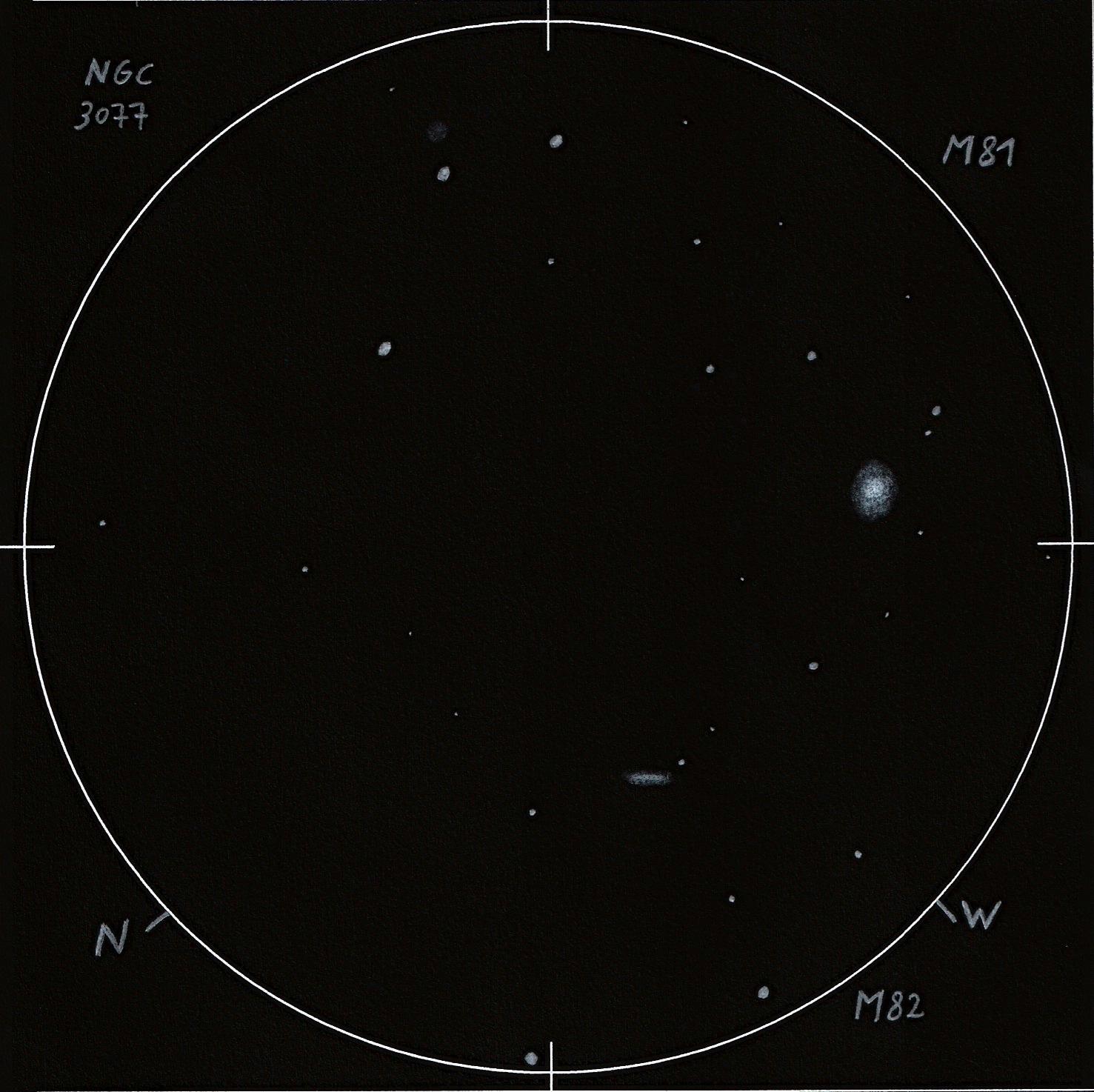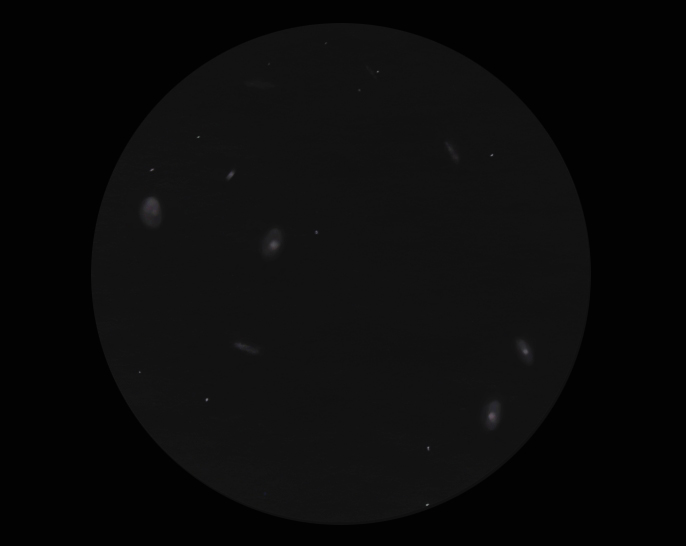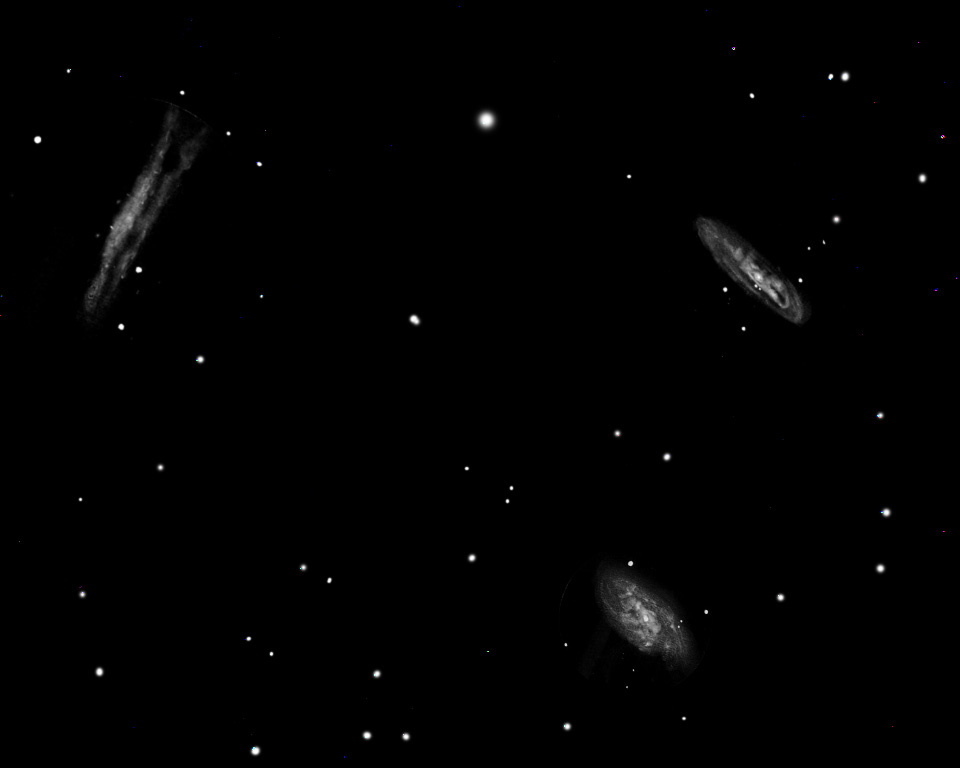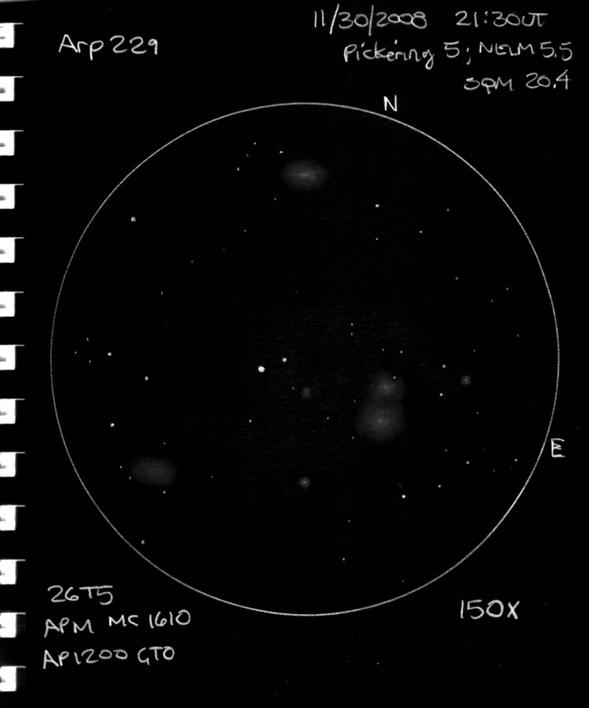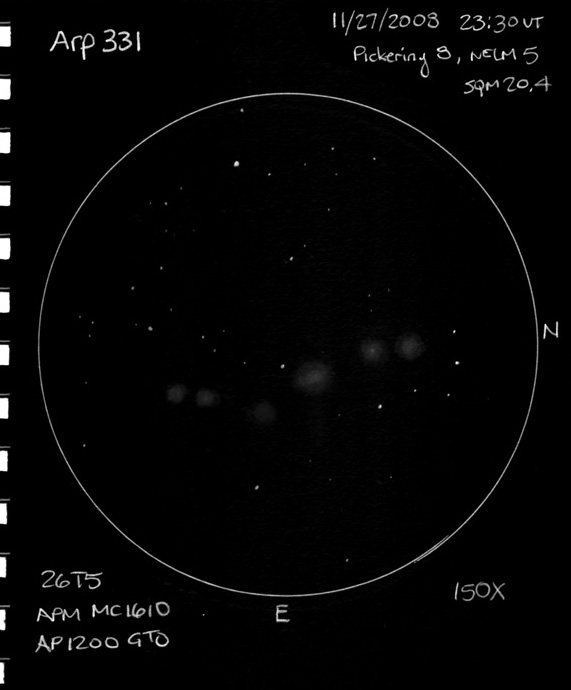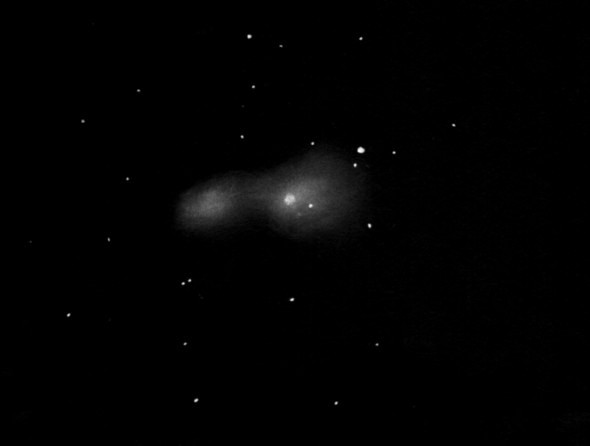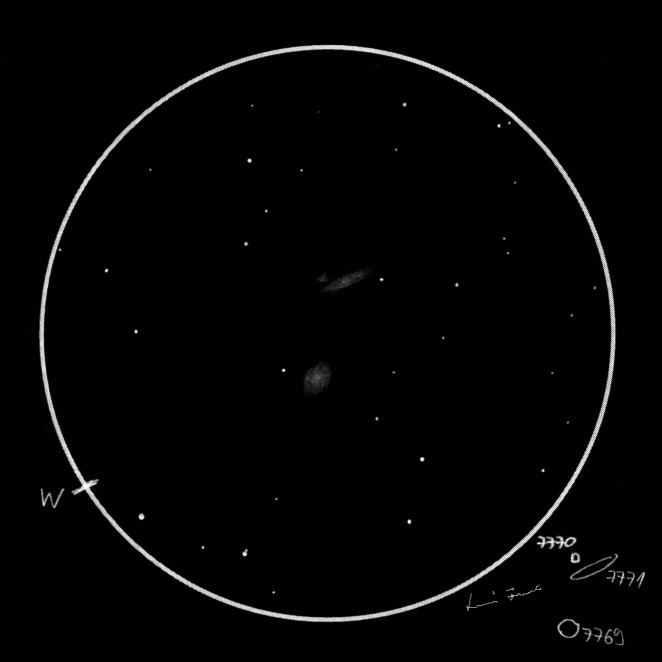
NGC 7769, NGC 7770 and NGC 7771 Galaxies in Pegasus
Sketch and Details by Ferenc Lovró
I’ve sketched this fantastic trio of galaxies during the Meteor Star Party 2009 in Tarján, Hungary. The two larger ones are the face-on NGC 7769 and the edge-on 7771, both with softly brightening cores. Next to 7771 a small fuzzy object is visible, which surprises me, since my printed star map (TriAtlas B, with a limiting magnitude of about 12) shows no other objects than the two large galaxies at this area of sky. But as I can clearly make out this bright diffuse spot, I place it on the sketch and can’t wait to find out what I really saw. It turns out to be the NGC 7770, another faint galaxy of 13.6m. This value I find a bit misleading, because visually its surface is not this much fainter than its two larger companion galaxies. This discovery makes me really happy, just like when I rediscovered NGC 5981 of the Draco Trio. SQM reading: 20.91 m/arcsec^2.
Sketching:
Constellation: Pegasus
Right ascension: 23h 52m; Declination: 20° 10′
Date/time: 2009.08.20 21:30 UT
Equipment: 12″ f/5 Newtonian
FoV: 32′ Magnification and filter(s): 100x
Seeing: 4/10 Transparency: 5/5
Observer: Ferenc Lovró
Location: Tarján, Hungary


